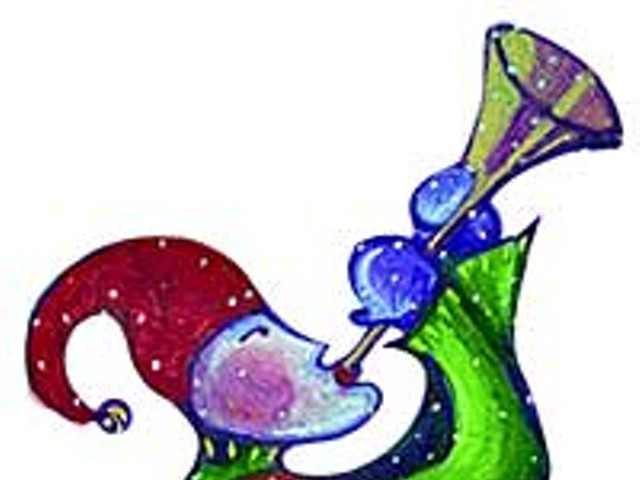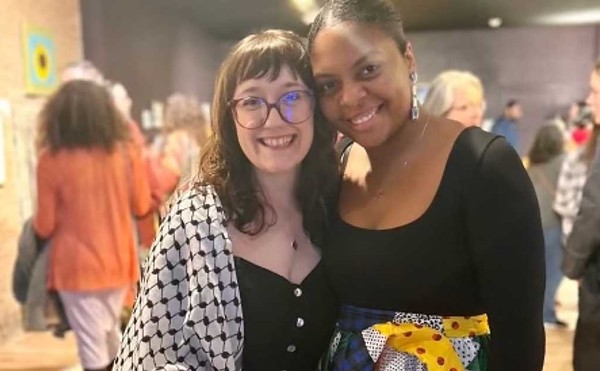The very old, kind-of-old and fairly new musings in the appropriately titled Writing Ann Arbor [University of Michigan Press, $39.95, 24 pp.] chronicle the city’s “cultural evolution, the ever-unfinished portrait of its shape-shifting identity,” in the words of its editor, Laurence Goldstein.
Part memoir, part history lesson and part University of Michigan recruiting catalog, Writing Ann Arbor gives voice and context to a collective nostalgia through the works of such authors as Max Apple, Charles Baxter, Sven Birkerts, Donald Hall, Robert Hayden, Jane Kenyon, Thomas Lynch, Ross Macdonald, Frank O’Hara, Marge Piercy, Dudley Randall, Elwood Reid, Bob Ufer, Wendy Wasserstein and Nancy Willard. The forms range from essays to poetry; the selections cover themes related to universities (intellectual stimulation and sexual freedom) and particular to U-M (the impassioned Ohio State rivalry). Even readers without the thinnest tether to the university town will appreciate these stories beyond the shared sense of reverence for their binding subject matter.
The person who put it all together, Goldstein — U-M professor of English, poet and editor of the Michigan Quarterly Review — talked recently about his efforts and intentions.
Metro Times: What made you want to tackle this anthology?
Laurence Goldstein: I’ve always believed that the essence of good writing is “location, location, location.” Growing up in Los Angeles, and then living as an exile, I remember the richness of its social context. I’ve always valued the texture of surfaces as well as the inner atmospheres of specific places. I began mentally collecting examples of writing about Ann Arbor from the moment I arrived in 1970, so when the University of Michigan Press asked me to edit the anthology I had much of it already in my mind. Why should someone else undertake all that work from the beginning? And I wanted to learn more about the city’s history, as I knew I would when I accepted the assignment. As I say in the introduction, the place we live in is always more real to us when we read about it, and I knew that the research involved in editing the anthology would enhance the reality of Ann Arbor for me and complicate my relation to the city in ways I would profit from in all my future projects.
MT: Your favorite section is the collage of 24 pieces at the front of the book covering the town from 1824 to the present. Why does this material speak to you so strongly?
Goldstein: “Collage” or “montage” is the favored technique of the modernist and postmodernist writing I teach in my courses (T. S. Eliot’s The Waste Land is the most famous example). And thanks to television and the Internet, it is the primary mode, for better or worse, of mental action in our own time. On the practical level, there are many essays and books that devote only a paragraph or two to Ann Arbor, so it makes perfect sense to excerpt and string the best writings together in order to compose a kind of polyphonic symphony or suite that carries the feel of the city as different voices articulate it. On a less exalted level, it’s like eating gumdrops of different tastes to move from the comic to the grim in the different entries: the letters home from students asking for money, the speech of visiting dignitaries, such as Gertrude Stein and Winston Churchill, and the big epiphanies by Gerald Ford and Tom Monaghan. For me the most moving of the 24 sections is Raoul Wallenberg’s letter to his grandfather, from when he was a student in the early 1930s. He went on to save so many European Jews at the cost of his life. He closes heartbreakingly by saying, “Just think how unpleasant we make it for ourselves and everybody else by being pessimists instead of optimists!”
MT: How would you describe the city’s current “intellectual culture” — the concept you cite as giving Ann Arbor its identity.
Goldstein: The profound joy of living in a university town or city is precisely the “intellectual culture” that John Dewey proposed as the essence of the educational experience. Notice that he does not say “academic” culture. “Intellectual culture” can be imbibed anywhere, including in a living room reading a good book. But the “culture” gains mass by having so many people pursuing it in the same location for so long. This culture is infectious; it spreads virulently in all the venues — not only in the classrooms but in the conferences, the lectures and panels, the poetry and fiction readings, the slams and barroom arguments. Stand on the diag at U of M and utter the words affirmative action, bioengineering, deconstruction or globalism and you’ll gather a crowd around you in a minute. I think that most students pass through this experience unselfconsciously and only appreciate it later in life when they miss the daily bull sessions and all-night reading, and then they get nostalgic for the coffeehouses and drinking holes.
MT: In his 1953 essay, Arthur Miller laments the loss of values he saw as a student in the 1930s: “One sees the absence of an idealism I clearly remember at Michigan and in its place a kind of pragmatism that threatens to create a race of salesman in the tawdry sense of the word.” How have Ann Arbor’s spirit, values and idealism changed over the years?
Goldstein: I was an undergraduate and then a graduate student in the 1960s, the decade that provided all the visionary energy and social activism that Arthur Miller remembered from the 1930s and missed in the 1950s. Arguably, that spirit of the 1960s ebbed in the aftermath of the counterculture, but I think it has ramped up again for the same reasons it flourished in the 1960s: the sense of crisis at home and abroad, the sensitivity to problems that urgently need addressing by the younger generation. I don’t find any of the “utopian” visions of the 1960s these days — more like the practical agendas that Miller and his fellow writer Robert Hayden remembered from his Depression days in Ann Arbor. The computer revolution of the last 20 years has cast activism into a somewhat quieter form on campus. There are fewer mass demonstrations in the open spaces of the university and more communal organizing online.
MT: Are there noteworthy holes in this anthology?
Goldstein: I believe that a city is best described by its neighborhoods, but I found less writing centered among “ordinary people” than I expected. However, two of the very best works about Ann Arbor, excerpted in the anthology, do focus on the mix of younger and older people in off-campus neighborhoods: Charles Baxter’s novel The Feast of Love and Nancy Willard’s novel Sister Water. I wish that I could have found some superb short stories, but the ones set here seemed to pay little attention to the city’s particulars; they mainly depicted people talking indoors, and perhaps a visit to Cottage Inn for a pizza. And there are controversies roiling the city right now about future development: how many high-rises, how many parks, how to handle the traffic, how to zone or re-zone crucial spaces. The next edition of the anthology will surely have some writing about the changing face of Ann Arbor in this decade.
Meghan McEwen writes about books and fashion for Metro Times. Send comments to [email protected]




